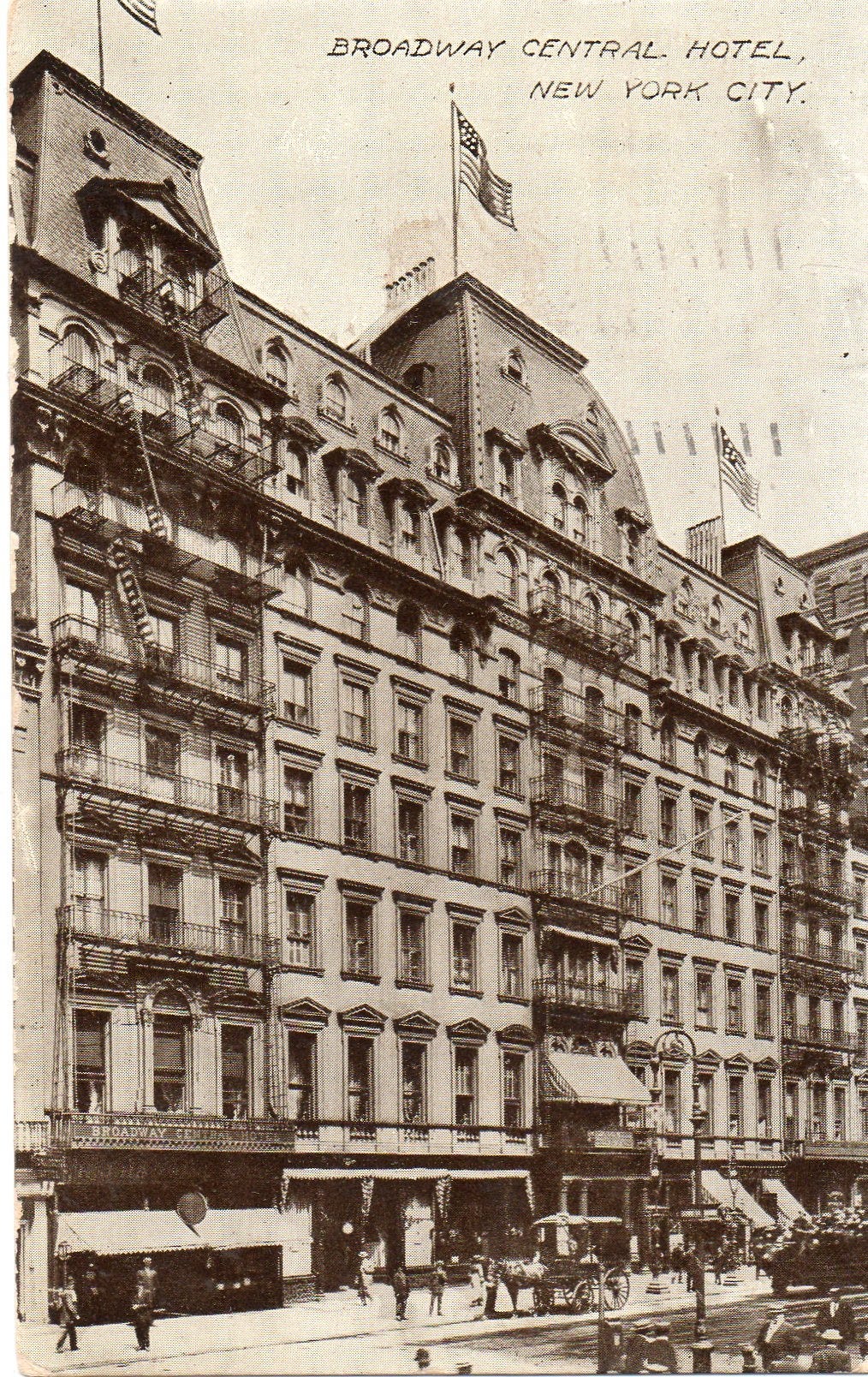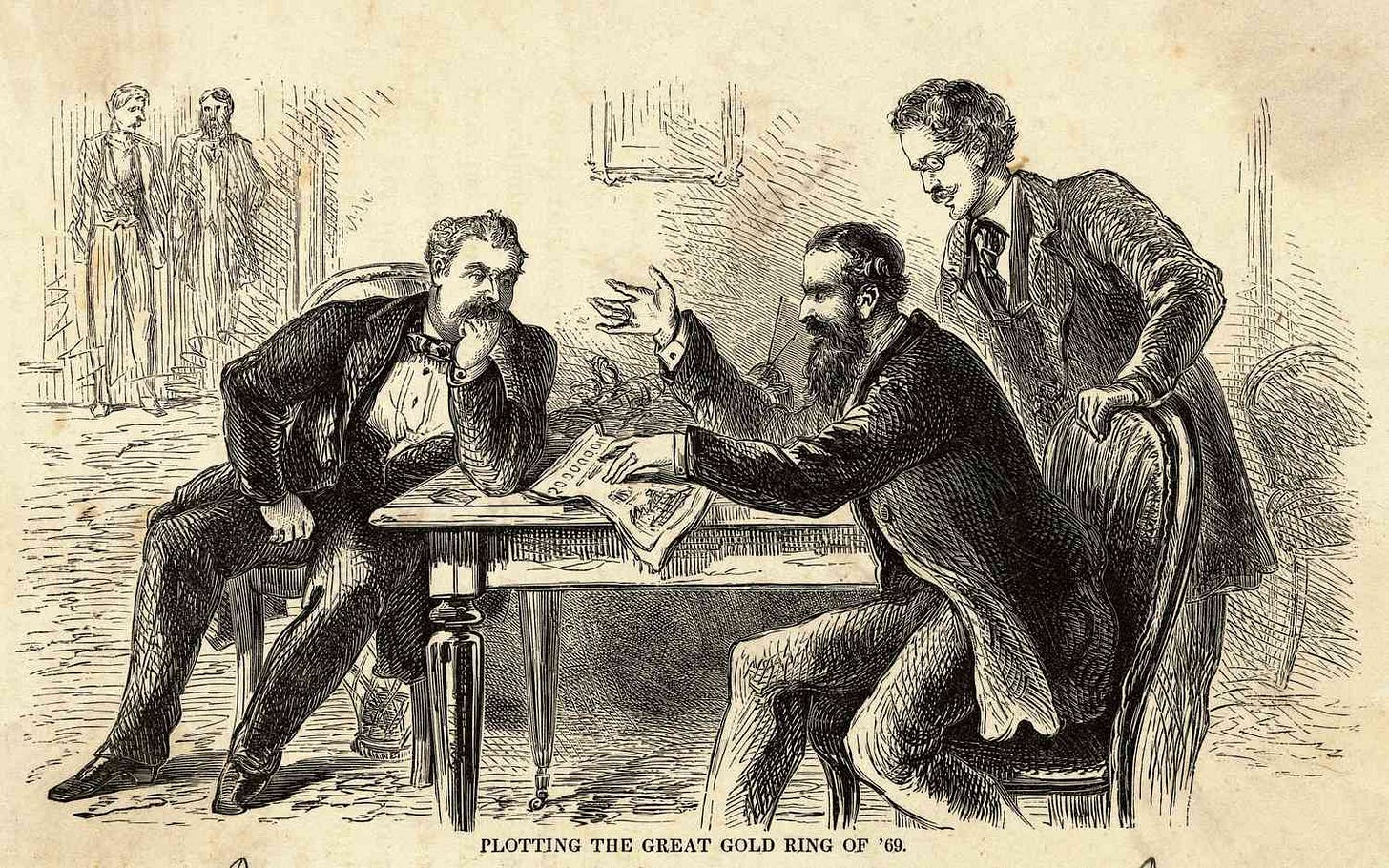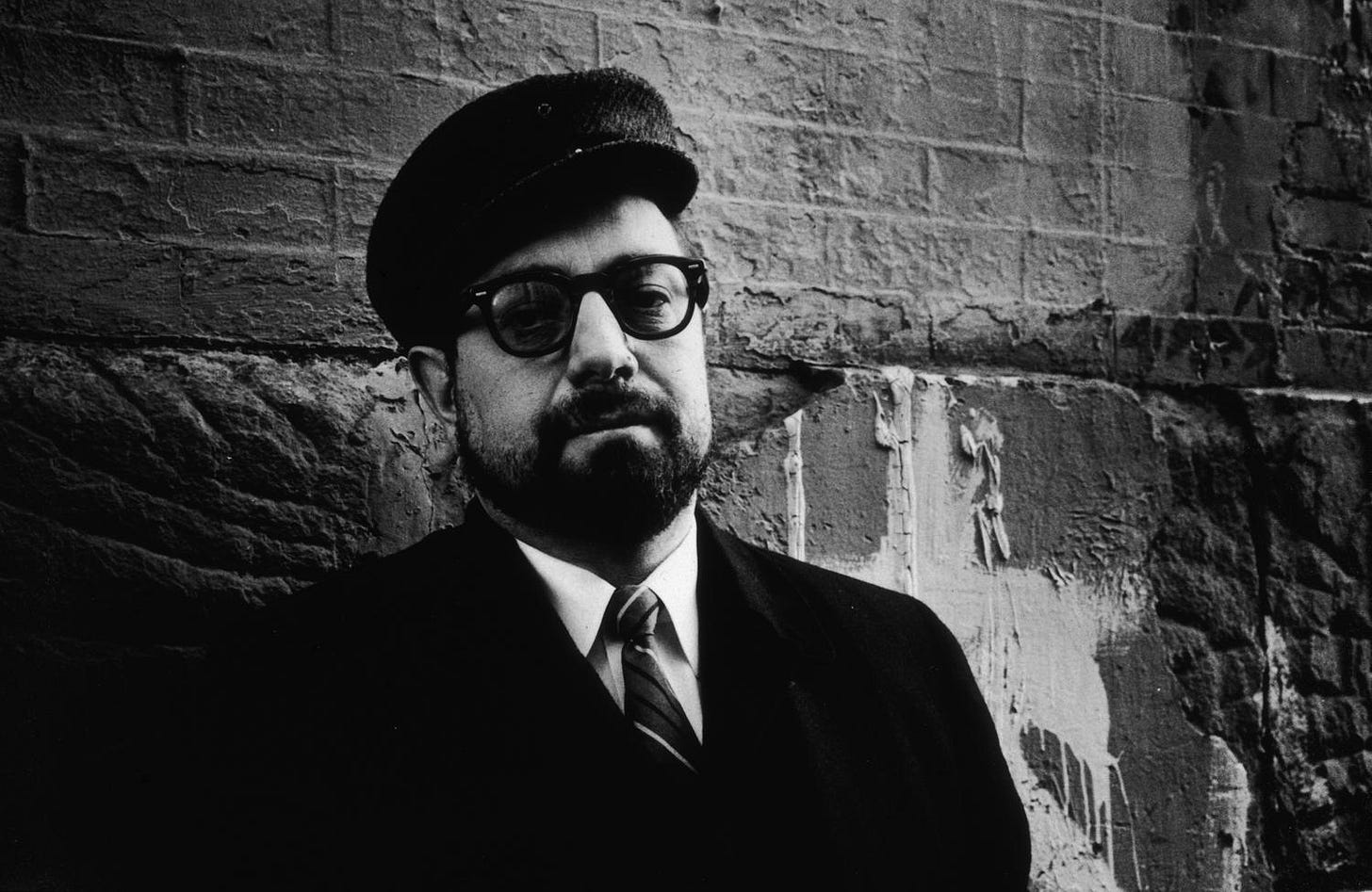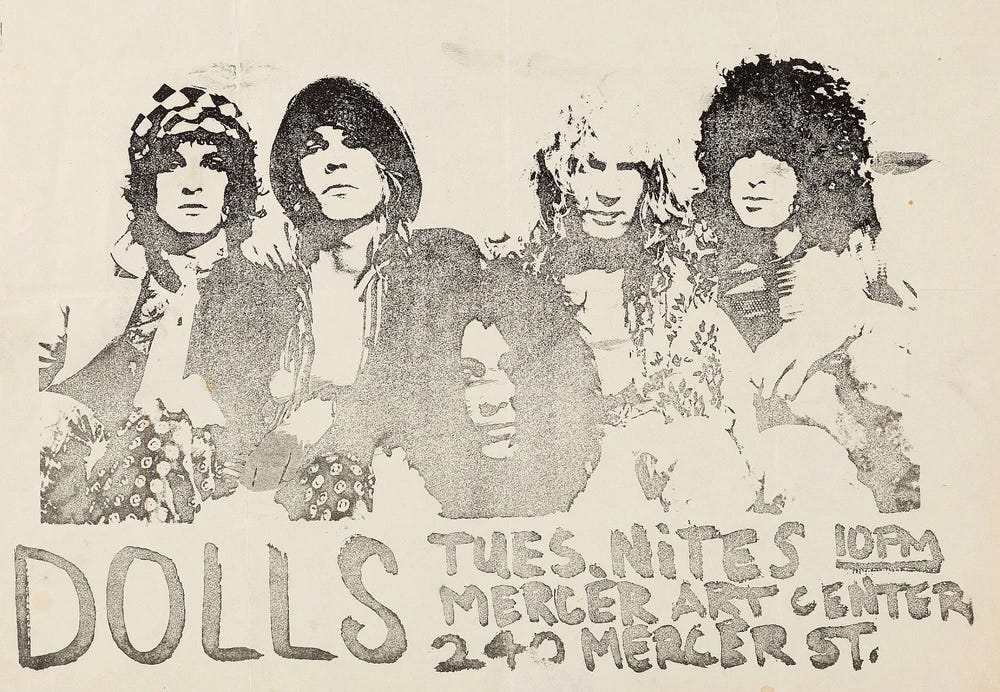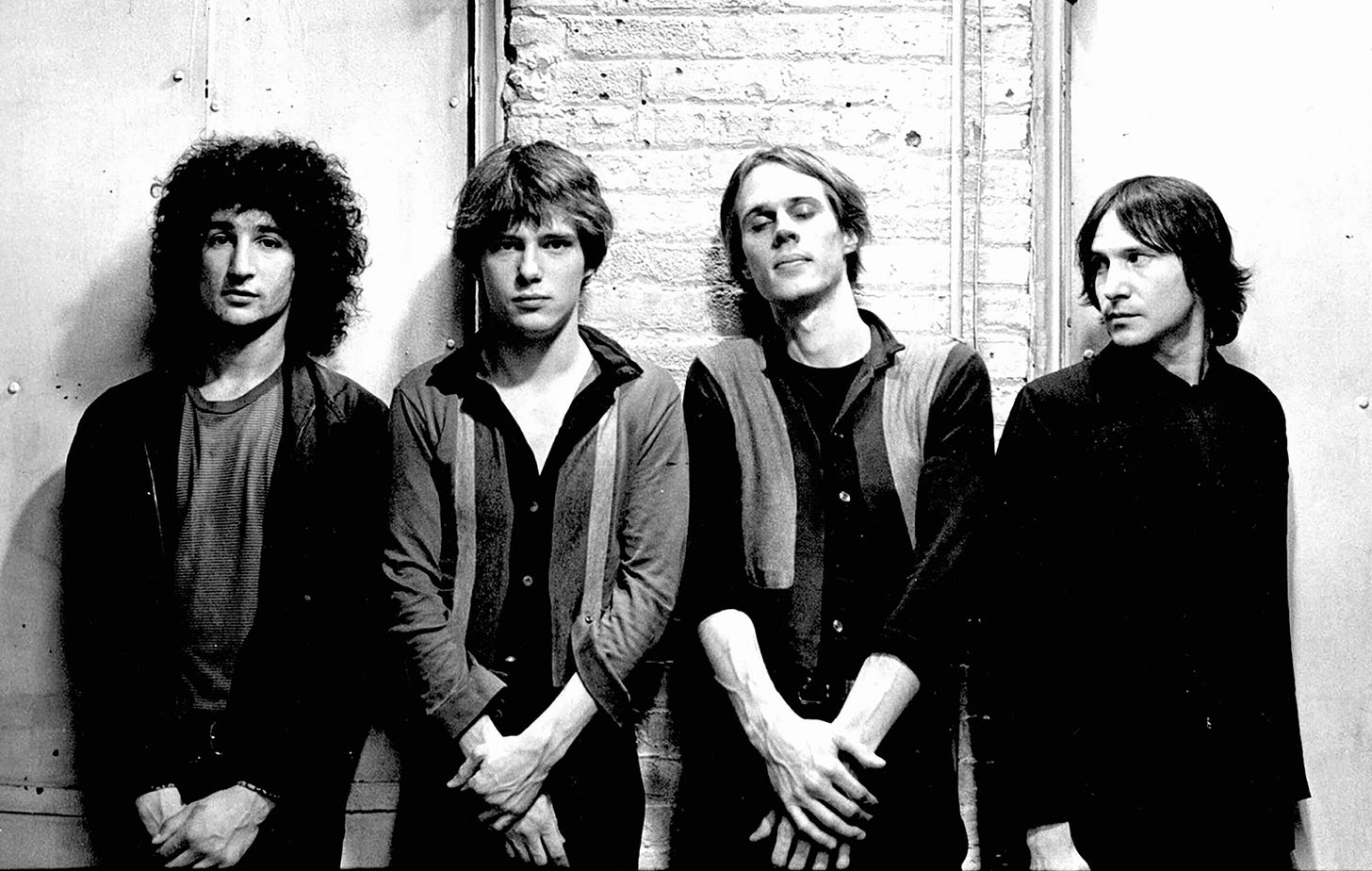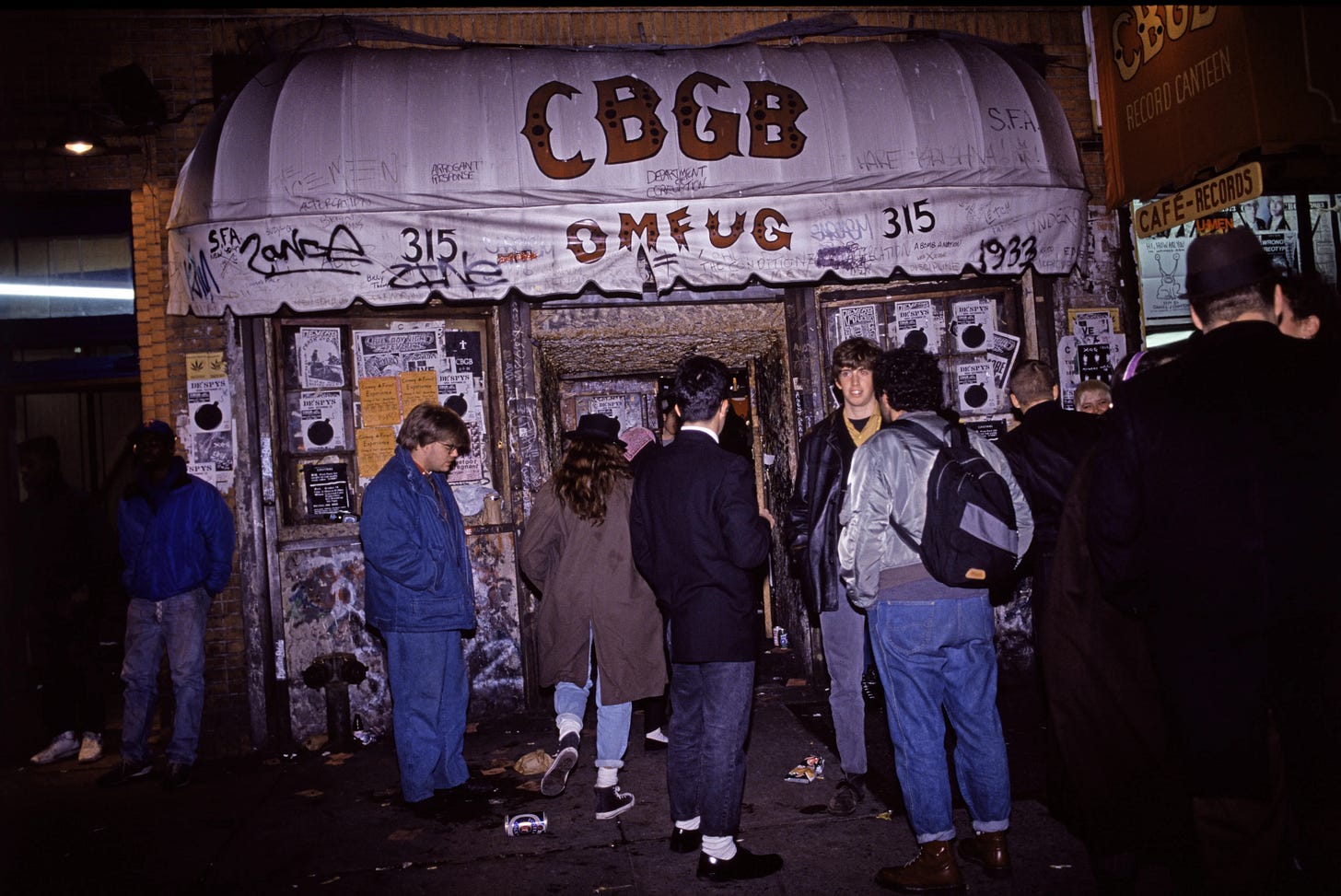The Wild Story of Mercer Arts Center's Fall and the Rise of CBGB's
From the juiciest scandals in the 1870s with ties to the President of the United States to the birth of punk rock a century later, this story has it all!
How are the birth of punk rock, Major League Baseball, and a robber baron from the 1800s connected? We’re about to piece it all together. It’s a wild story that begins with one of the juiciest scandals of the 1870s and ends with the birth of an equally wild cultural movement a century later.
Hi, I'm Andy Fenstermaker, and this is another episode of Poetic Wax, where I dig deep into the record collection I’ve been building since the 1990s and share the history of a band, album, song... or, in this case, a scene... from within.
I’ve been exploring the little known history in music since 2006. And when I say little, I mean it. Those miniscule events that create monumental change. Today I'm pulling out my 1977 copy of Marquee Moon by Television to dig deep into THE venue that helped truly launch the New York City punk rock scene in the 1970s.
It’s time to dig in…
Chapter 1: CBGB’s Before Punk Rock
What if I told you that one of the most notorious punk venues in New York City during the 1970s very nearly never came to be. After all, before CBGBs was CBGBs, the acronym was a bit longer. It was CBGB & OMFUG, which stood for "Country, Bluegrass, Blues, and Other Music For Uplifting Gourmandizers."
Yes. Really.
Before CBGBs was CBGBs, it was a venue for... that. Whatever that was. And this is the story of how a tragic accident transformed CBGB & OMFUG into the cultural phenomenon that we -- as fans of punk and rock -- know, love and appreciate.
Chapter 2: The Broadway Central Hotel
Before punk was a thing, there was really no true focal point for what was going on in the underground rock scene. Sure, there were venues but they weren’t centralized. The closest thing to it, though, was the Mercer Arts Center in the Greenwich Village neighborhood.
This spot was about as central as you could get to the musical and cultural scene in New York City between 1971 and 1973. Located at 240 Mercer Street, it was part of the Broadway Central Hotel, originally the Grand Central Hotel.
The Grand Central Hotel opened a century earlier — in 1870 — with much fanfare and grandeur. In the late 1800s it was a hub for the famous and wealthy. Boasting 8 stories and 630 rooms, at the time of its opening it was the largest hotel in the United States. Within two years would become famous for two notable events.
First, it was the scene of a murder. According to an article on VillagePreservation.org, the hotel was
“the site of one of the juiciest scandals of the era, when in 1872 robber baron Jim Fisk was shot and killed by former partner Edward Stokes in a quarrel over the affections of actress Josie Mansfield.”
Fisk was no stranger to scandal alive, either. Before Black Friday was a shopping holiday, one now entwined with a second Record Store Day each year, it had more sinister undertones.
Befriending President Ulysses S. Grant, Fisk and his partner Jay Gould attempted to use the president’s good name in a scheme to corner the gold market in New York City in 1869. This triggered a gold panic and financial crisis.
The second notable event took place on February 2, 1876 when eight baseball teams met at the hotel and formed what became the National League in Major League Baseball. The league would celebrate both its 50th and 75th anniversary at the hotel.
They wouldn’t have a chance to celebrate their centennial.
Let’s get into that next.
Chapter 3: The Collapse of the Mercer Arts Center
A century after its opening, the hotel had fallen on hard times. As the New York Times put it, it had become “a cesspool of squalor and crime.” No longer the glamorous locale it once was, by 1969 it had become a welfare hotel for 300 residents dubbed the University for its proximity to NYU.
In 1971 Art D’Lugoff opened the Mercer Arts Center on two of the hotel’s floors. The Mercer Arts Center was housed in a former ballroom and catering area with six theatre spaces. Some notable names frequented the space, including actor Rip Torn, with successful productions of Macbeth and One Flew Over the Cuckoos Nest. It was also frequented actor and theatre director Gene Frankel, and early pioneers of video art Woody and Steina Valuska.
Though successful, those productions came at a cost, and to help pay for them as well as much-needed renovations, the Mercer Arts Center opened its unused spaces to fringe rock bands of the day.
The New York Dolls played some of their first gigs there, becoming regulars at the space. The Ramones, Suicide, and the Modern Lovers all used and regularly performed at the Center as well.
Here are the Dolls performing “Personality Crisis” live, but not at Mercer Arts.
However, it all lasted just two years. In the first half of 1973, some work was done on the basement. Following the construction, the building began showing accelerated levels of fatigue with cracks and bulges appearing in the walls.
Then, on Friday, August 3, it began making all sorts of strange noises. Creeks, groans… stuff like that.
People were aware of it — but before anything could be done — well, this is a quote from writer and actor Trav S.D., who penned an article on the 50th anniversary of the event:
“Shortly after 5pm, pieces started to tumble off the building, and then the whole thing gave way. If it had happened just a couple of hours later, the theatres might have been full of audiences for that evening’s performances. As it happens, four of the hotel residents were killed and several others were injured.”
Among the dead were residents Herbert Whitehead, Kay Parker, and Arthur and Peggy Sherwin. Nineteen others were injured.
Here’s another quote from villagepreservation.org:
“it was Panicsville there,” said then–Mercer owner Seymour Kaback. By 3:35 pm, Kaback had called hotel manager Joseph Cooper about the problem; Cooper tried and failed to reach an engineer to assess the situation. At around 5, shortly before performances were to begin, bricks were falling from the Mercer Arts walls. The hotel started to crumble at 5:10 pm, taking parts of some theater space with it. Soon, the building collapsed onto Broadway, spilling tons of debris on the street.”
Following the collapse, what remained of the hotel would be demolished. Today a 22 story dormitory for New York University sits where Mercer Arts Center and the Broadway Hotel once was.
But where does CBGBs come into this?
“The four plays taking place at the time — One Flew Over the Cuckoo’s Nest, El Grande de Coca-Cola, The Proposition, and Tubstrip — as well as the bands found new homes throughout the city.”
It wasn’t immediate, though, and it took another event for the transition to take place. And now we must pivot to the band Television.
Chapter 4: The Birth of CBGB’s and Punk Rock
Friday, August 3, 1973. That was the end of the Mercer Arts Center. And all the weird music freaks had lost their home base.
This is where three guys named Richard Hell, Richard Lloyd, and Tom Verlaine enter the story. They were looking for a place that would let their band play.
In December of that year they were on the way to a bus stop when they noticed a bar named CBGB OMFUG. Remember that name?
They walk in and find the owner Hilly Crystal and asked if he might allow them to play. Since the bar wasn’t open on Sundays, they asked if they could take the stage on an upcoming Sunday night. Just over three weeks later, Television played the first ever rock night at CBGBs.
Word began to spread, and it didn’t take long for the blues and bluegrass to be pushed aside for a new thing called punk rock.
Here’s Television performing live at CBGB’s on December 27, 1976:
Here’s a quote from Medium:
“…the legacy of the CBGB era was not just musical. It affected clothing, makeup, graphics and hairstyles just to throw out a random list… That said, there is only one way to transport yourself backward absent a time machine. Close your eyes and listen to the music and maybe the sights and sounds and the energy of that tiny place in a crumbling city will come back. Despite the conditions of that time and place, there was hope and a future in what they did and we are living it.”
New episodes of Poetic Wax debut every Sunday on YouTube where you can get the visual experience, or you can hop on your favorite podcast platform and give it a listen. I’d love it if you could like, subscribe, rate, review, and spread the world. It all helps!
In the decade prior to CBGB’s, there was another venue, place, hub… well, something… happening in the Chelsea neighborhood of New York City. Soon, I’ll dig into the story of how Andy Warhol met The Velvet Underground.





